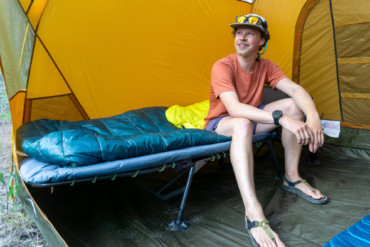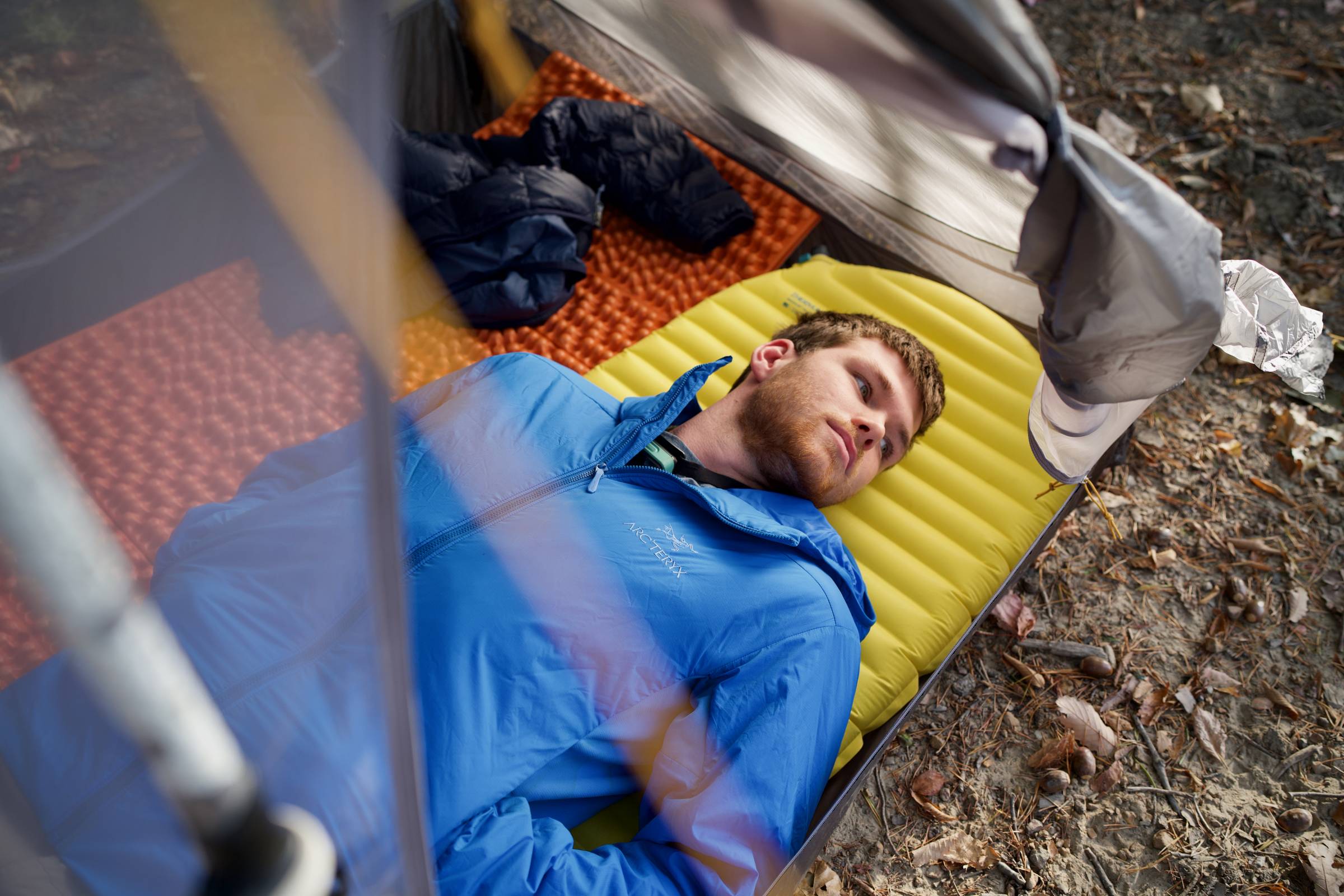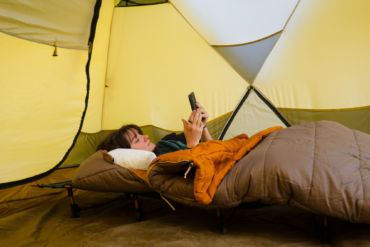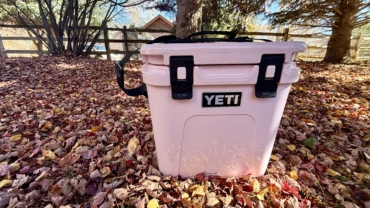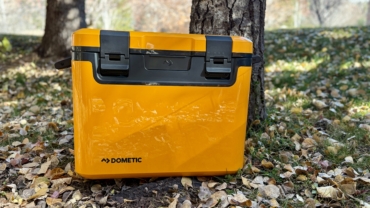Emergency bivvy sacks are simple, useful products in bad situations or when an ultralight solution is required. This review was originally written in 2007, but the SOL Emergency Bivvy is still sold, and useful, today. The article was updated in Oct. 2016.

Sometimes the simplest innovations are among the best. Thus is the case with two bivouac sacks, also called “bivvy” or “bivy” sacks, from Adventure Medical Kits (www.adventuremedicalkits.com). These are essentially improvements on the decades-old concept of the Space Blanket, and have been around for a few years now.
Bivvy sacks are sleeping-bag-like products without lofting insulation. They repel rain, wind, and snow and are used in lieu of tents or tarps by mountaineers, minimalist backpackers, and other hard-core adventure types who sacrifice comfort, and some protection, for weight savings.
They are also very useful in emergency situations when a sleeping bag isn’t available.
Adventure Medical Kits SOL Bivvy Sacks

Adventure Medical Kits’ bivvy sacks (branded as “Survive Outdoors Longer”) are made to be used alone. Various models and sizes are available.
I tested two: the Thermal Bivvy and Emergency Bivvy. Both are made of a reflective Space-Blanket-like material and are best employed alone.
You can put a sleeping bag inside larger ones, as I have done for cold-weather camping and during mountaineering trips.
Bivvy Sacks: Minimalist Sleeper
Made for emergency situations and ambitious fast-and-light adventures, these two bivvy sack products, which measure about 36×84 inches, weigh almost nothing. They are water- and wind-resistant.
As per my tests, they provide adequate warmth as well, keeping me fine and cozy in lightweight clothing during a recent overnight mountain bike adventure where temps dropped to the high 50s.
To keep off the desert ground, I slept out on a slab of cement at a campsite alongside the backcountry trail. I wrapped up in the Emergency Bivvy and used a bike shoe as a pillow. With nothing but stars above I slept hard for a few hours before getting up and on the trail again.

One caveat: Both these bivvy sacks are made of non-breathable material, meaning they get clammy if sealed tight around the body for long periods.
SOL: Emergency, Thermal Bivvy Reviewed
The Emergency Bivvy is made of a polyethylene material that is metalized to reflect back body heat. It’s different from Mylar or Space-Blanket-type products in that the fabric is plastic-like and somewhat stretchy. It won’t tear and shred like an old-school Mylar job.
At 3.8 ounces, the Emergency Bivvy can be thrown in a pack and forgotten. It costs $17. It’ll be there when it’s needed, in an emergency or otherwise. An orange shell adds visibility should you be stranded awaiting rescue.
The Thermal Bivvy is a step up. It’s more comfortable as a lightweight replacement for a sleeping bag when nighttime temperatures are 50 degrees or higher. I’d recommend adding a warm top like a fleece or rain shell and a hat of some sort if you’re going to attempt an ultra-light feat.
At 8.9 ounces the Thermal Bivvy is made of a heavier, more durable material. Velcro tabs seal it shut, letting you get in and wrap up for warmth. It goes for $30, and is worth every penny.



